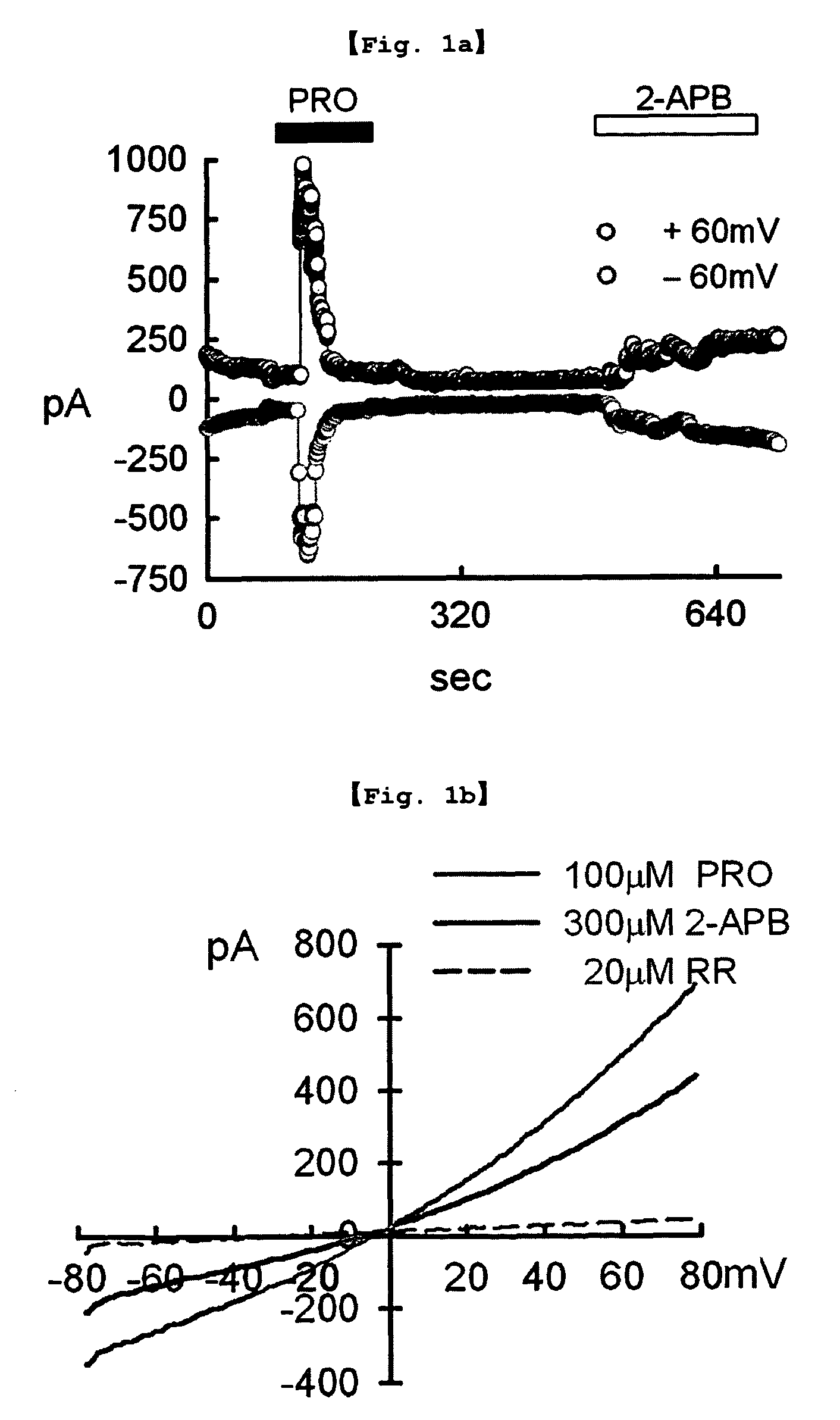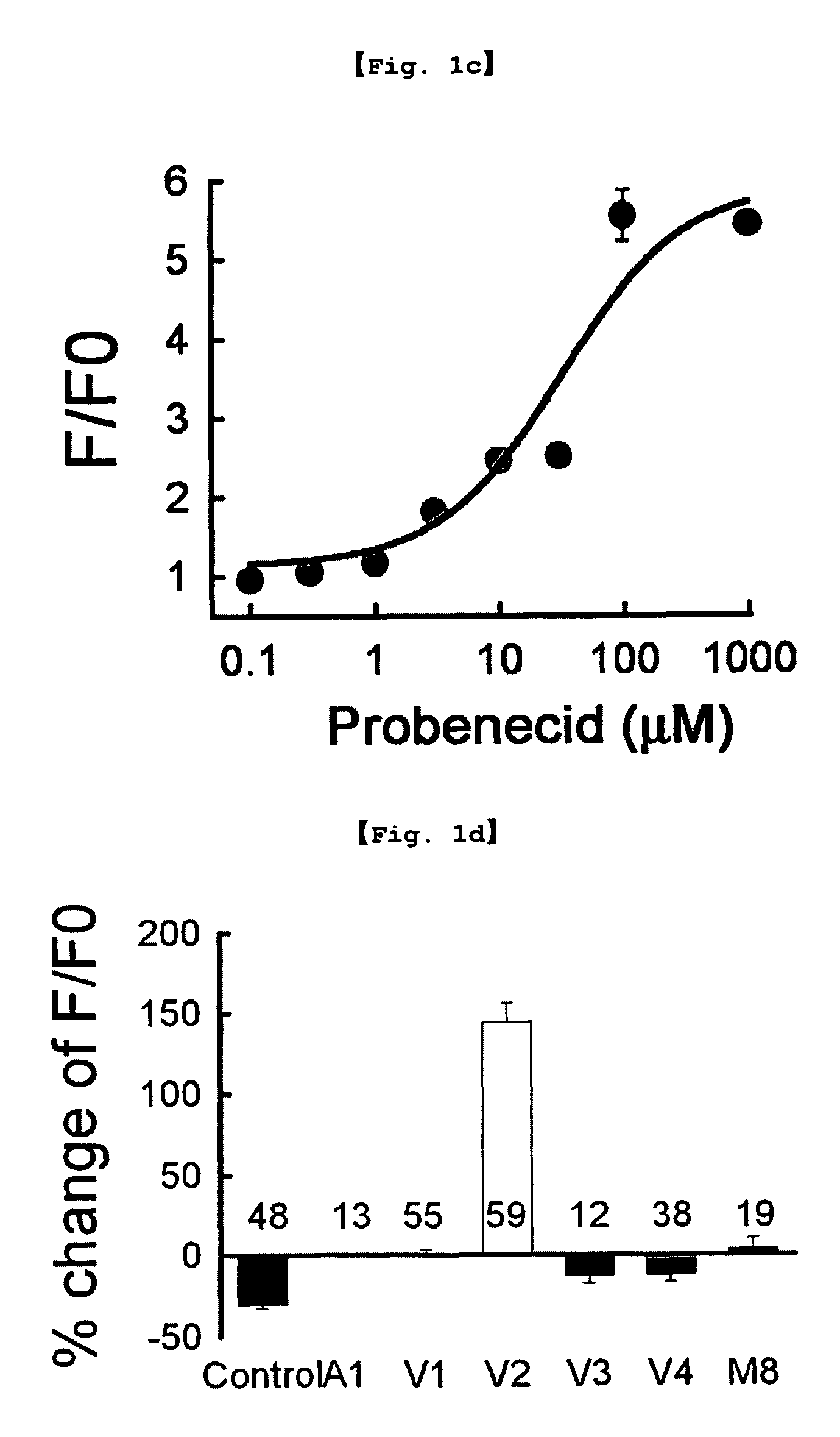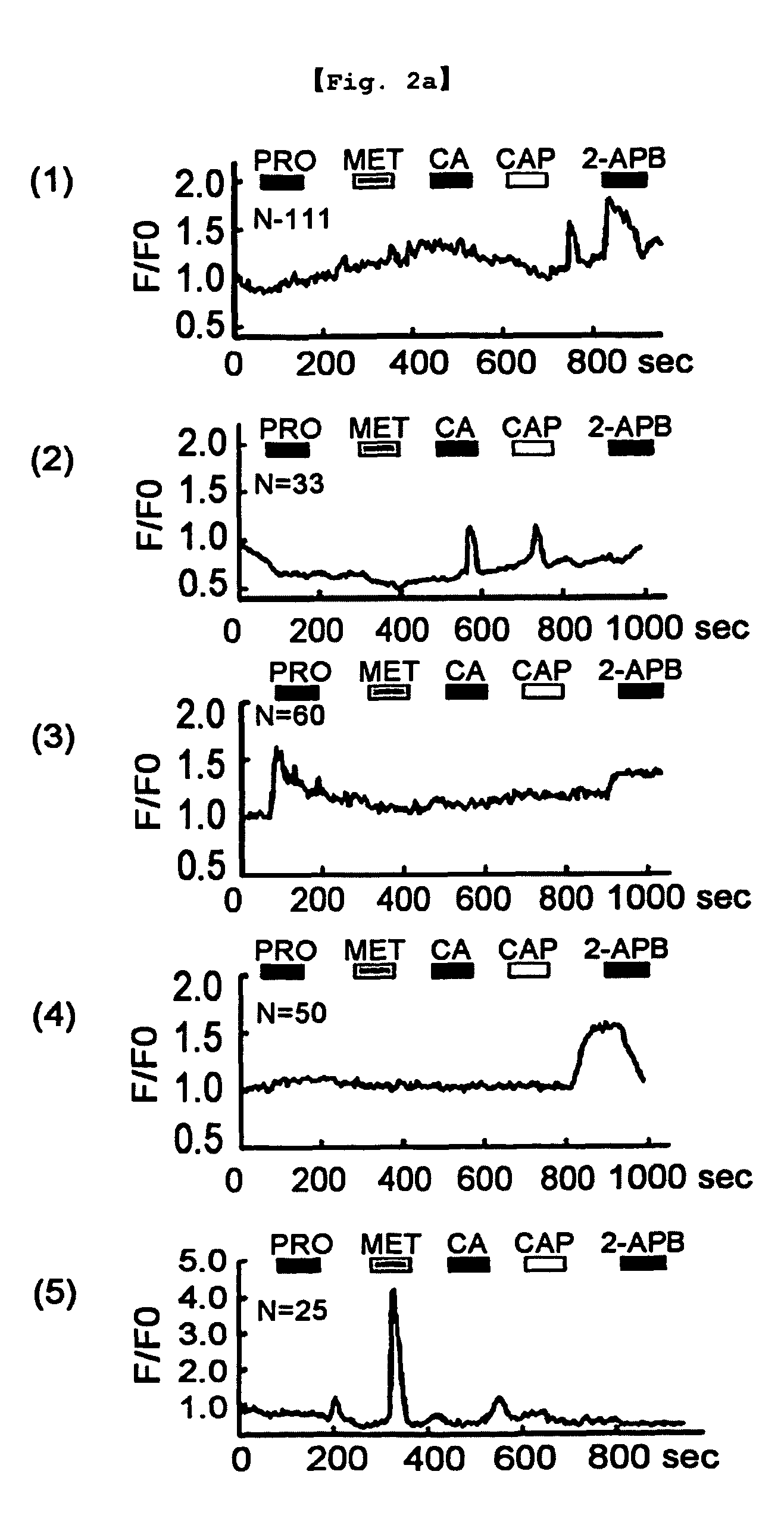Methods for screening for inhibitors of TRPV2 activation
a technology of trpv2 and inhibitor, which is applied in the field of activation of trpv2, can solve the problems of not being a good candidate for trpv2 specific activators, not being very useful, and not being able to report on the specificity of trpv2 activators, and achieves the effect of facilitating the isolation of sensory neurons
- Summary
- Abstract
- Description
- Claims
- Application Information
AI Technical Summary
Benefits of technology
Problems solved by technology
Method used
Image
Examples
example 2
Preparation of trigeminal neurons
[0104]Trigeminal ganglia were dissected out of decapitated adult ICR mice in cold PBS and treated with 1.5 mg / ml of collagenase / dispase (Roche Diagnostics, USA) at 37° for 45 min, and then treated with 0.25% trypsin (Invitrogen, USA) for 15 min. The trigeminal neurons prepared thereby were then plated onto poly-L-lysinecoated coverslips in DMEM / F12 containing 10% FBS, 1% penicillin / streptomycin and 5 ng / ml of 2.5S NGF (Invitrogen, USA), followed by culture in a CO2 incubator for 48-72 hours.
experimental example 1
Investigation of TRPV2 activation by probenecid or 2-APB (2-aminoethoxydiphenyl borate)
Treatment with of probenecid and 2-APB
[0105]The TRPV2 transfected cell line prepared in Example 1 was treated with 100 μM probenecid (Sigma-Aldrich, USA) and 300 μM 2-APB (2-aminoethoxydiphenyl borate; Cayman Chemical, USA), respectively. Stock solutions were made using water, DMSO or ethanol, and were diluted with test solutions before use.
Whole-Cell Voltage-Clamp Experiment
[0106]Whole-cell voltage-clamp recording, one of the patch-clamp techniques, was performed with the transfected cell line of Example according to the method of Bandel M, et al. (Neuron 41:849-857, 2004).
[0107]Particularly, the extracellular solution (140 mM NaCl, 5 mM KCl, 2 mM CaCl2, 1 mM MgCl2, 10 mM HEPES; titrated to pH 7.4 with NaOH) and the pipette solution (140 mM CsCl, 5 mM EGTA, 10 mM HEPES, 2.0 mM MgATP, 0.2 mM NaGTP; titrated to pH 7.2 with CsOH) were used. The potential was held at −60 mV for 250 ms, voltage-ramp...
experimental example 2
Investigation of block of TRPV2 activation by probenecid or 2-APB using ruthenium red
[0109]The TRPV2 transfected cell line prepared by the method of Example 1 was treated with 100 μM probenecid, 100 μM probenecid+20 μM ruthenium red (Sigma-Aldrich, USA) and 300 μM 2-APB, respectively. Stock solutions were made using water, DMSO or ethanol, and were diluted with test solutions before use. Then, whole-cell voltage-clamp recording was performed by the same manner as described in Experimental Example .
[0110]As a result, as shown in FIG. 1b, probenecid induced response shown in FIG. 1a was inhibited by ruthenium red, a general TRP pore blocker.
PUM
| Property | Measurement | Unit |
|---|---|---|
| diameter | aaaaa | aaaaa |
| pH | aaaaa | aaaaa |
| pH | aaaaa | aaaaa |
Abstract
Description
Claims
Application Information
 Login to View More
Login to View More - R&D
- Intellectual Property
- Life Sciences
- Materials
- Tech Scout
- Unparalleled Data Quality
- Higher Quality Content
- 60% Fewer Hallucinations
Browse by: Latest US Patents, China's latest patents, Technical Efficacy Thesaurus, Application Domain, Technology Topic, Popular Technical Reports.
© 2025 PatSnap. All rights reserved.Legal|Privacy policy|Modern Slavery Act Transparency Statement|Sitemap|About US| Contact US: help@patsnap.com



